LPZINC® <ZnO Filler for Heat Dissipating>
In recent years, there has been a greater demand
than ever before for electronic components to
withstand higher temperatures.
This is due to the increased use of power equipment
and faster data transmission speeds.
Zinc oxide exhibits excellent properties as an
inorganic filler in composite materials such as
heat dissipation sheets and greases.
1. Required performance
Heat dissipation materials consist of a matrix resin
and a heat dissipation filler.
The thermal conductivity of the matrix resin is
usually 0.1 to 0.3 W/mK, which is lower than
that of the heat dissipation filler, so the heat
dissipation performance mainly depends on the
heat dissipation filler.
In this case, small particle fillers alone do not
perform sufficiently due to increased thermal
resistance between filler particles and between
the particles and the resin.
Therefore, it is effective to use large particle fillers
as the main component to transfer heat more
effectively.
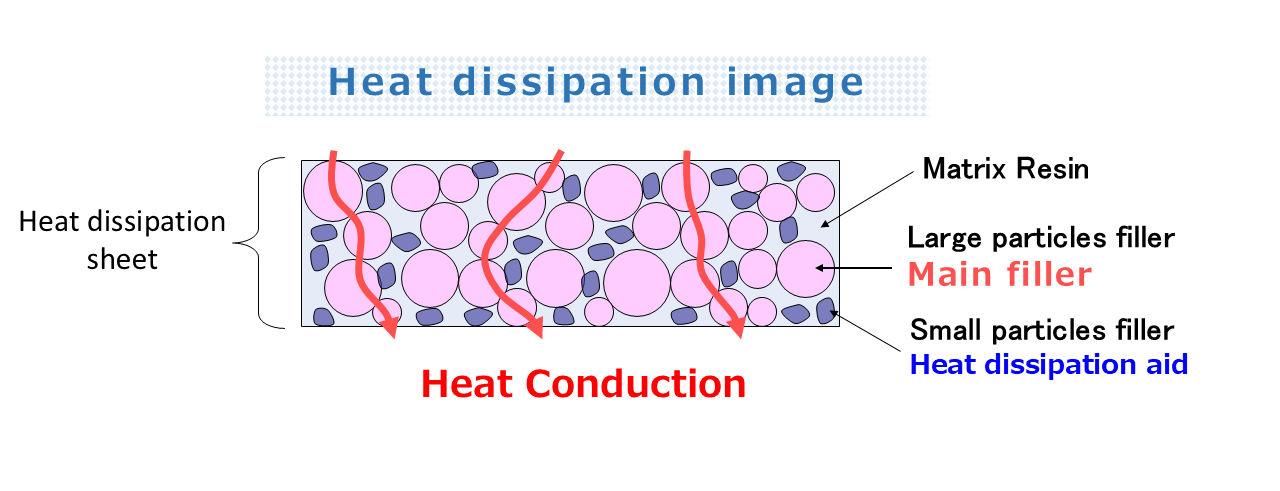
2. Comparison of various fillers
Compared to common oxide heat dissipation fillers
such as aluminum oxide and magnesium oxide,
zinc oxide has the advantage of high thermal
conductivity due to reduced contact thermal
resistance, and a low thermal expansion coefficient.
However, it should be noted that it has inferior
insulation properties.
In addition, zinc oxide has the advantage of
being a soft substance with a low Mohs hardness,
which significantly improves wear loss in kneading
and molding equipment.
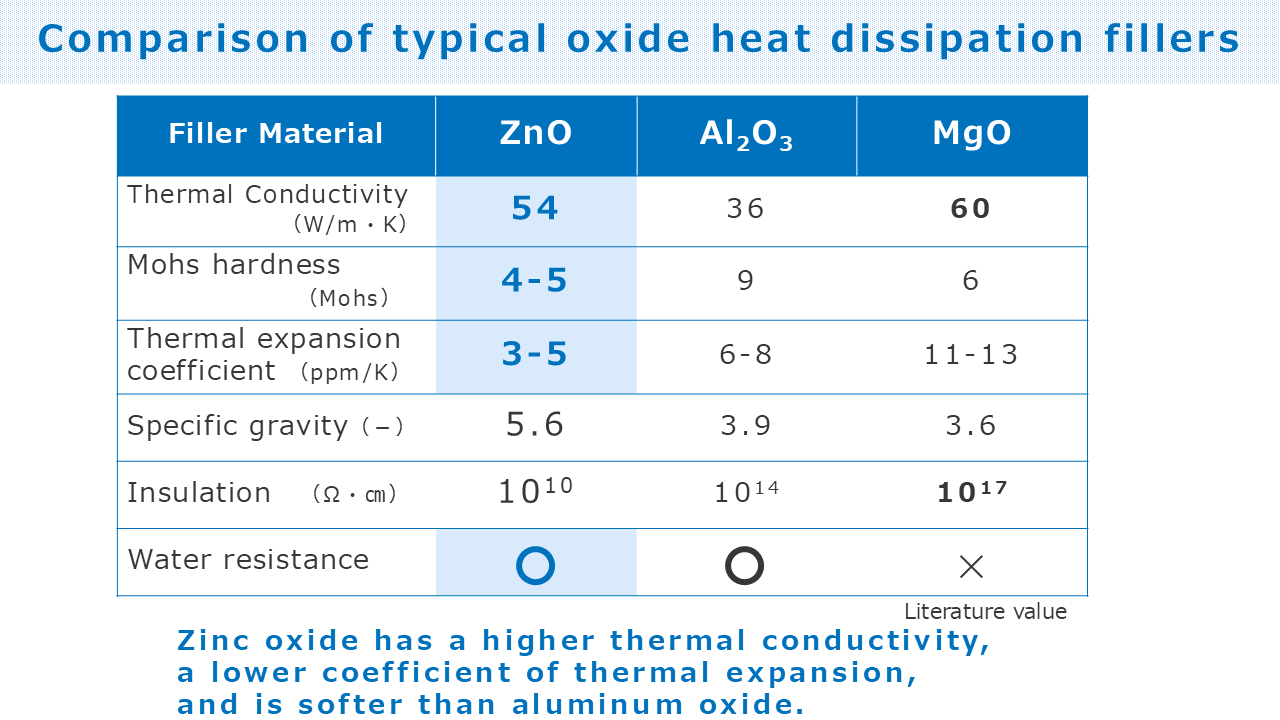
3. Introduction of large particle zinc oxide products
We have developed distinctive large-particle zinc
oxide products by controlling particle size and
shape using our outstanding technology.
We offer two types of products: irregular and
spherical.
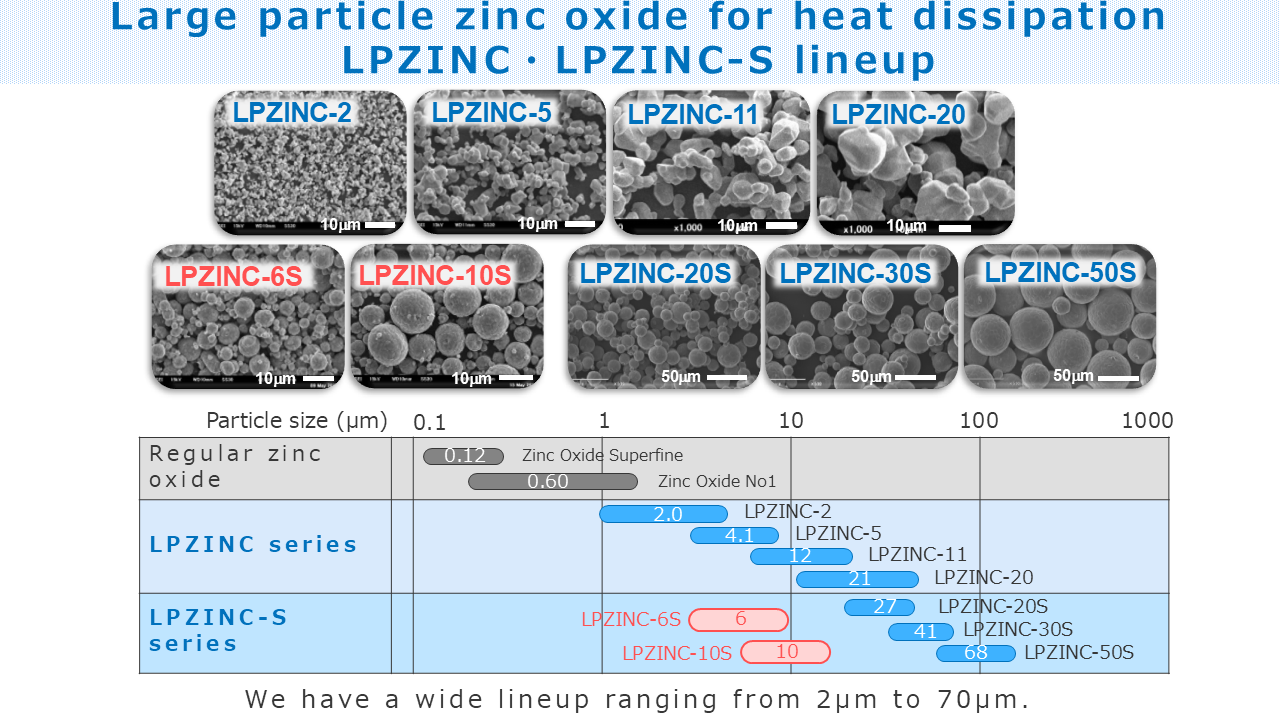
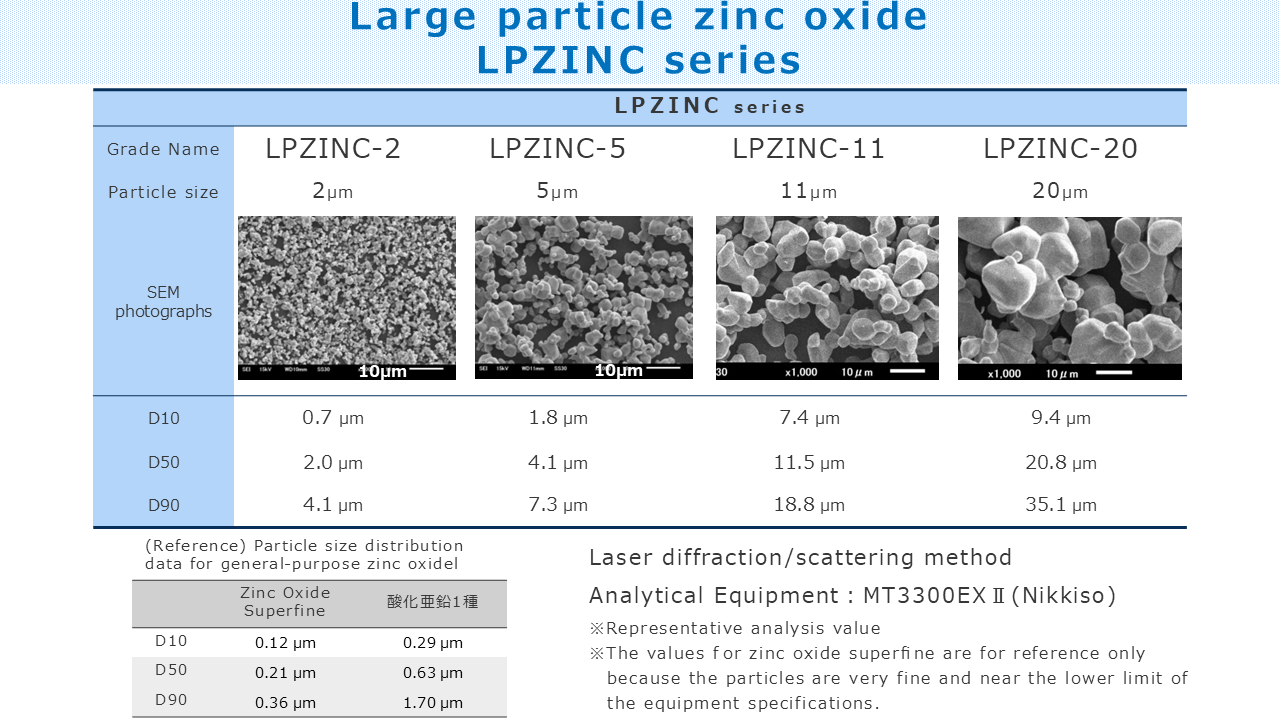
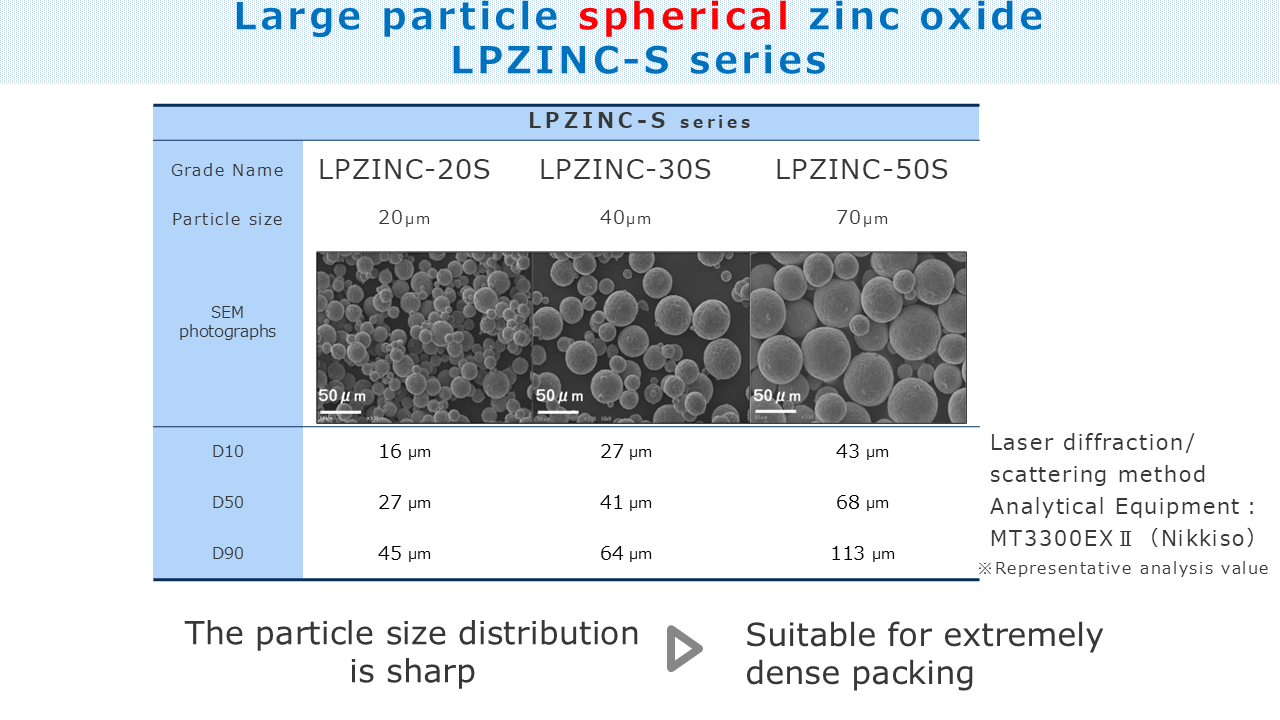
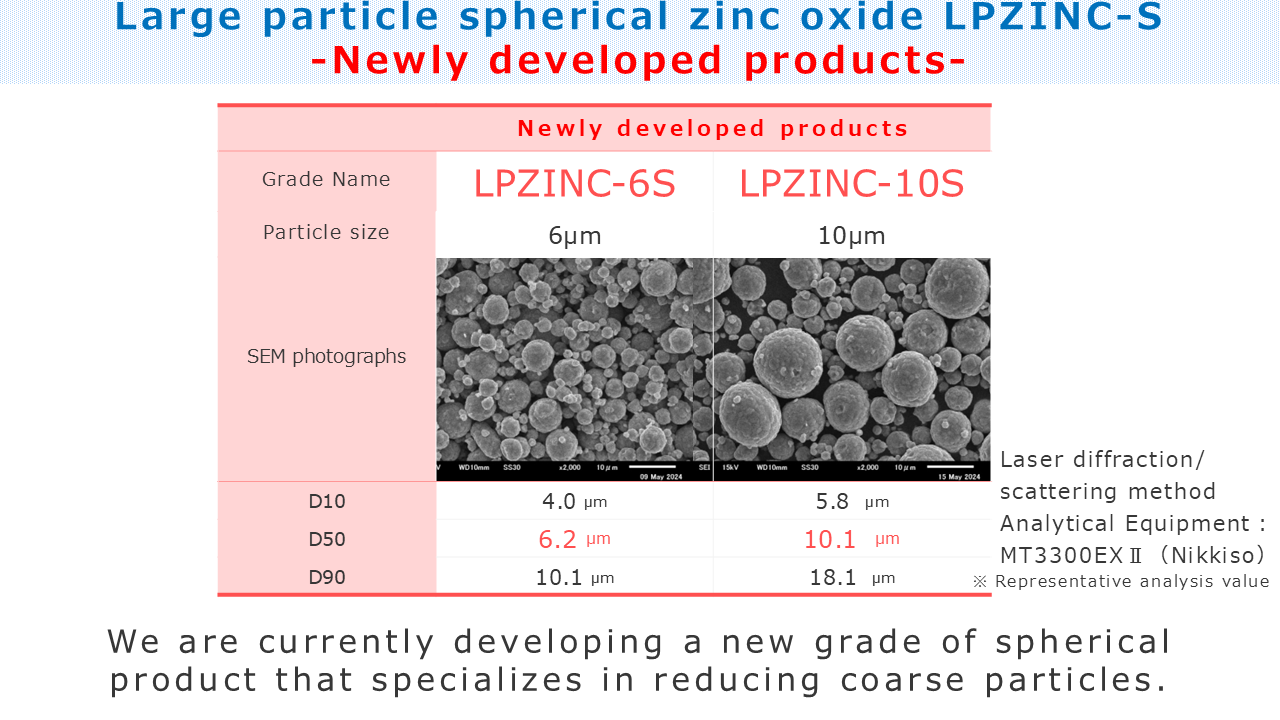
4. Effect of high filling/close packing
When the soft zinc oxide particles are densely
packed, they come into surface contact and
connect like beads.
This tendency is further intensified when large
and small particles are closely packed at a high
concentration.
As shown in the photo below, when the gaps
between large particles (LPZINC-30S) are filled
with small particles (LPZINC-2, 11) to achieve
close packing, the thermal conductivity is increased
even more than when only large particles are used
to increase the packing rate.
However, it is not necessarily true that the larger
the particle size of the main filler, the better.
With coarse particles whose particle size is not
properly controlled, the filler will be unevenly
distributed when mixed with the resin, and some
particles will crumble, causing variations in thermal
conductivity.
Another feature of zinc oxide is that it has a greater
high-filling effect than alumina.
While alumina, which has high hardness, tends
to remain in point contact, zinc oxide has more
surface contact, which expands the heat dissipation
path and is thought to increase thermal conductivity.
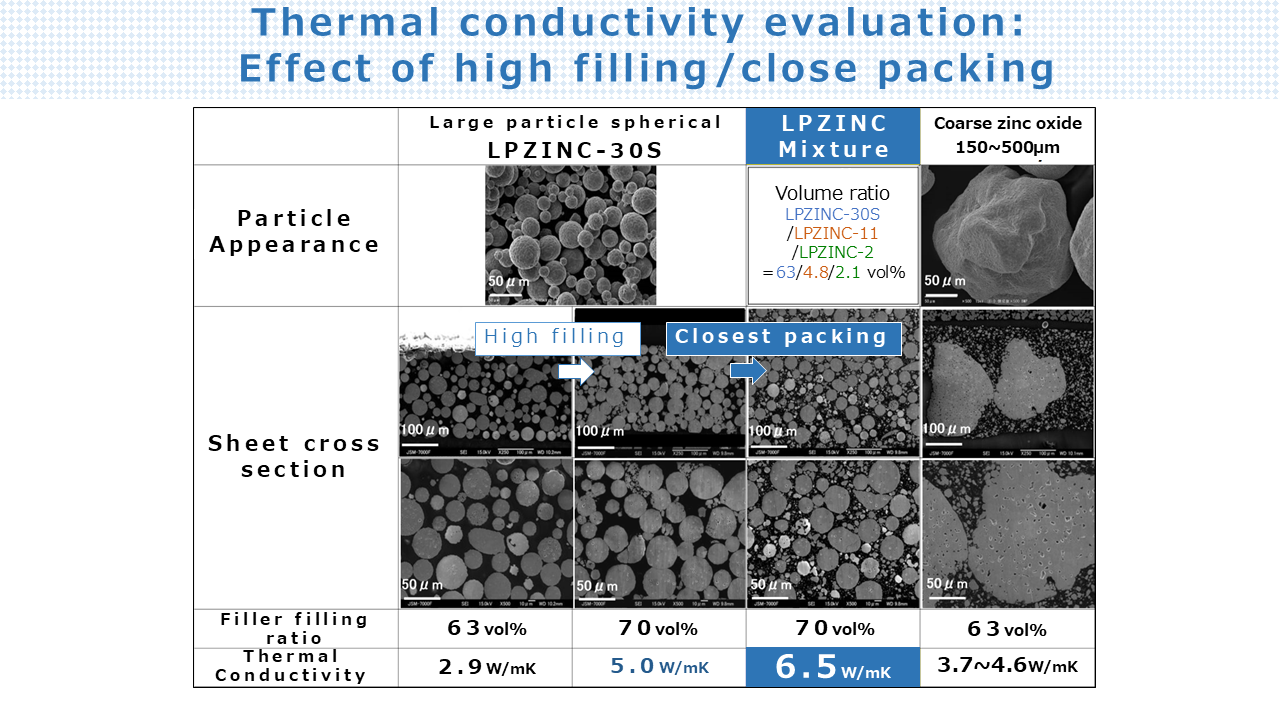
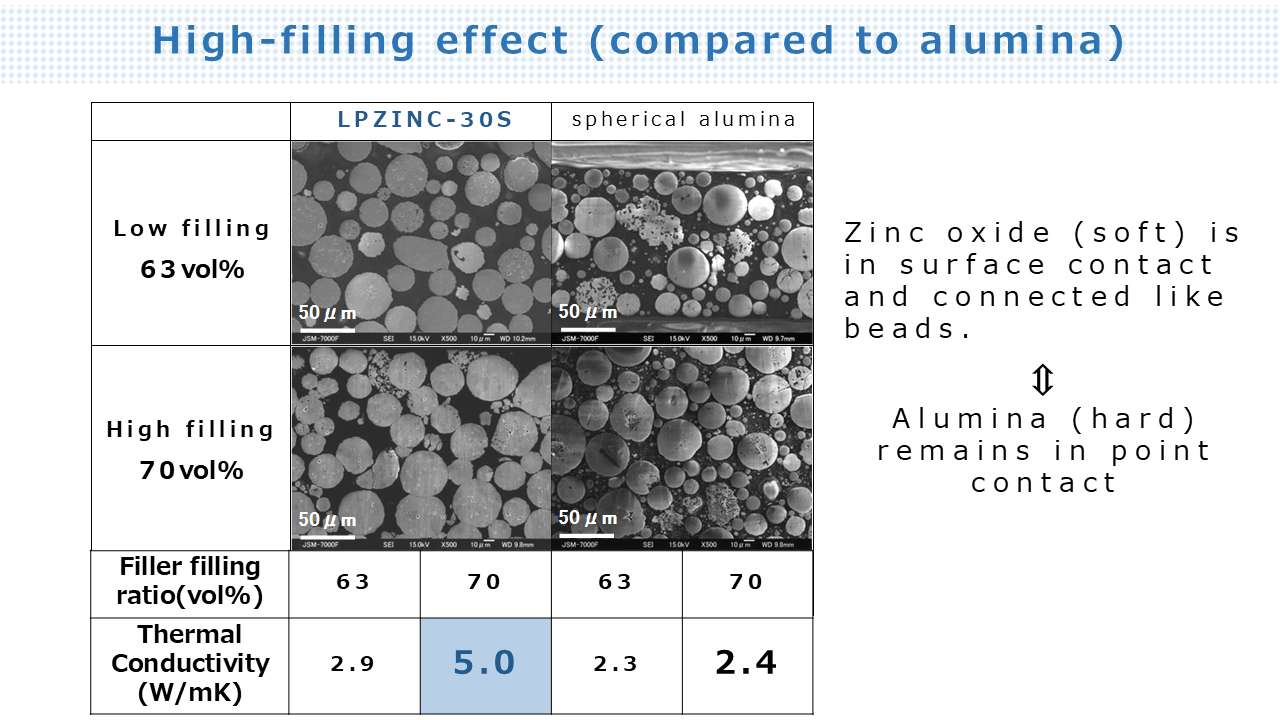
5. Effect of surface treatment
Surface treatment of inorganic powders is one of
Sakai Chemical’s core technologies.
Organic treatment improves resin affinity, resulting
in low viscosity during mixing.
Inorganic silica treatment is also expected to
improve insulation properties.
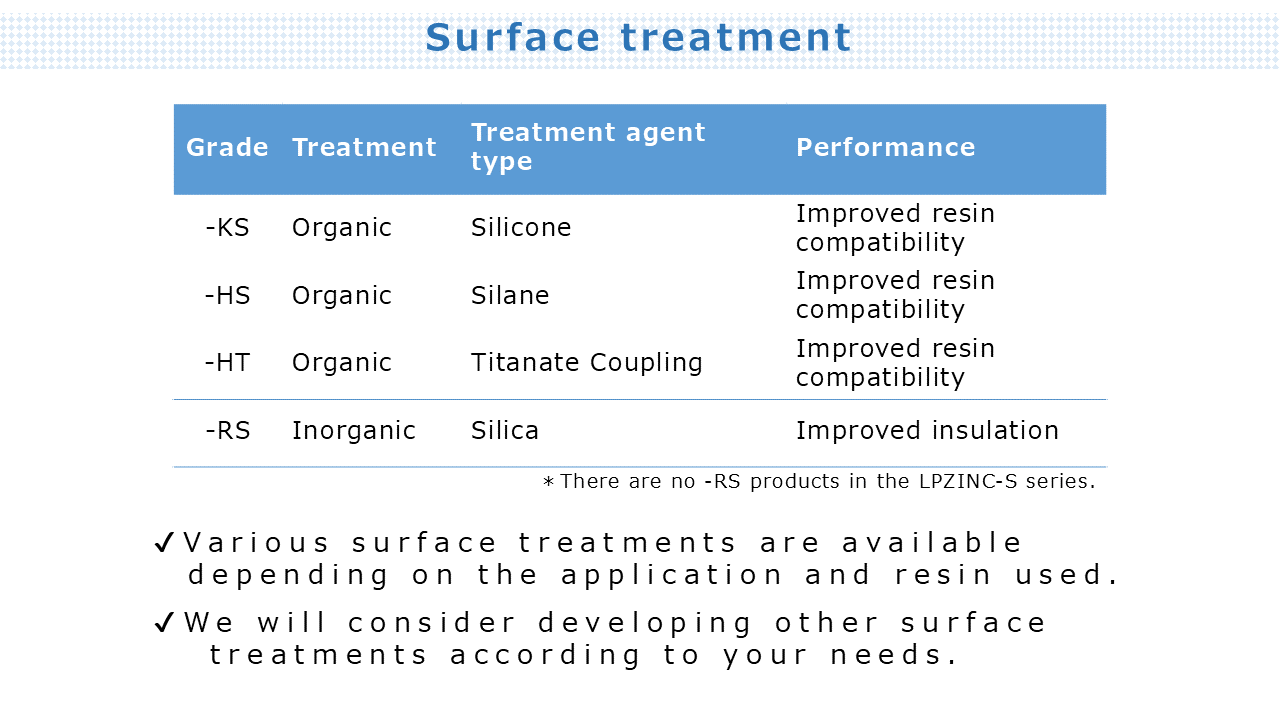
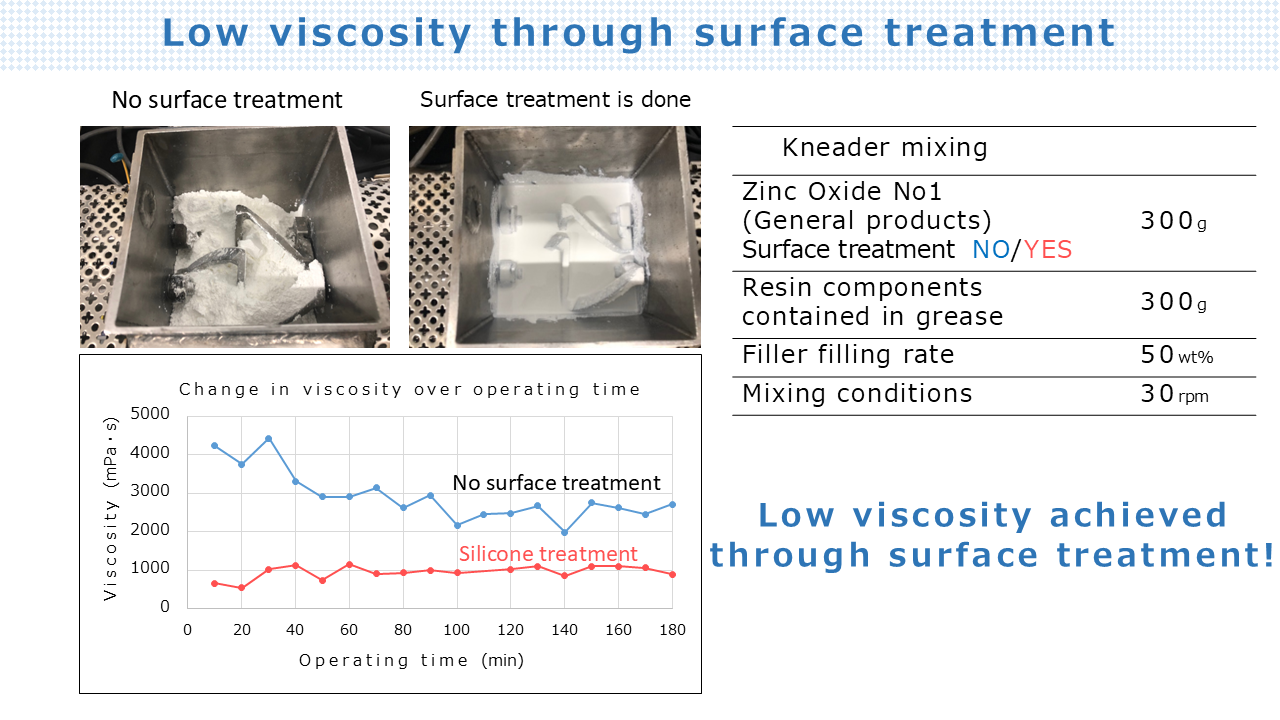
[Reference] List of Sakai Chemical's zinc oxide products
We offer a lineup of zinc oxide in a wide range of
particle sizes and unique shapes, such as hexagonal
plates and petal shapes.
If you would like to request a sample, please use
the inquiry form on this page.
We look forward to hearing from you.
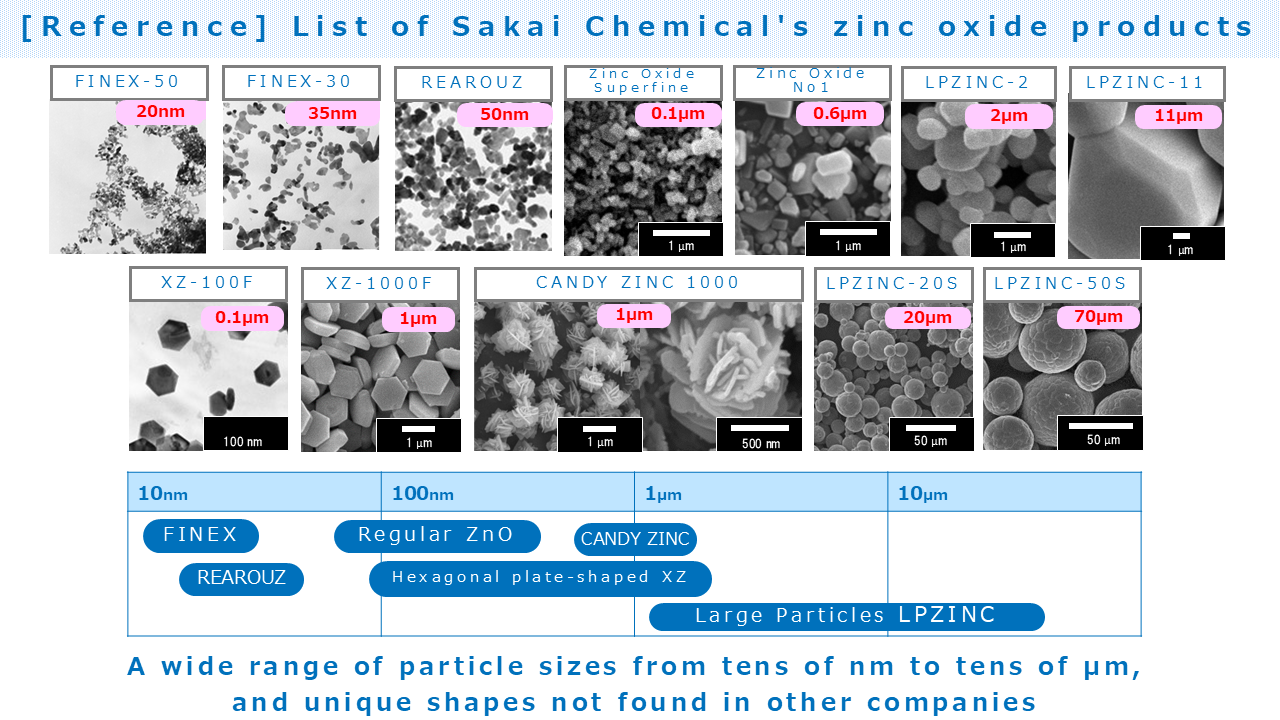
お問い合わせ先
Inorganic Chemicals Sales Department
(TOKYO)
TEL:+81-3-5823-3722
(OSAKA)
TEL:+81-72-223-4155



